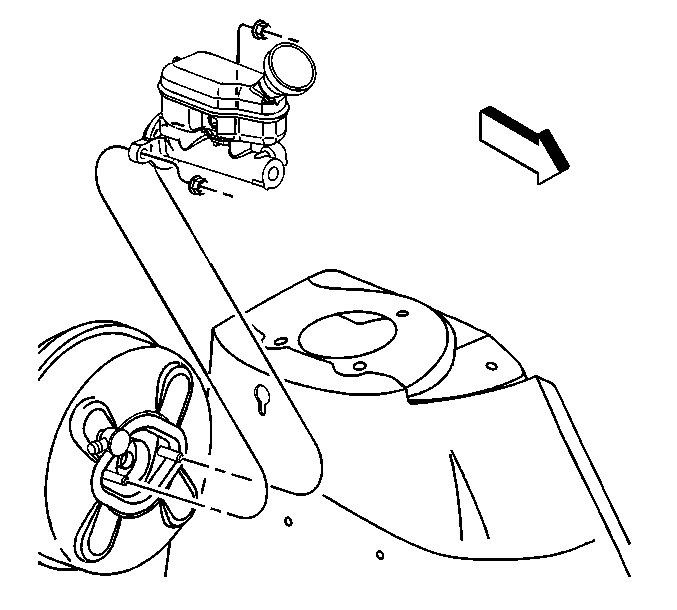Removal procedure
Caution: Refer to Brake Fluid Irritant Caution in the Preface section.
Notice: Refer to Brake Fluid Effects on Paint and Electrical Components Notice in the Preface section.
- Disconnect brake pipes from the master cylinder.
- Disconnect fluid level sensor electrical connector.
- Remove master cylinder mounting nuts.
- Remove the master cylinder.
- Drain the master cylinder reservoir of all brake fluid.
- Remove the master cylinder reservoir. Refer to Master Cylinder Reservoir Replacement .

Installation Procedure
- Install the master cylinder reservoir. Refer to Master Cylinder Reservoir Replacement .
- Bench bleed the master cylinder prior to installation. Refer to Master Cylinder Bench Bleeding .
- Install the master cylinder.
- Install the master cylinder mounting nuts.
- Connect the fluid level sensor electrical connector.
- Connect the brake pipes to the master cylinder.
- Fill the master cylinder reservoir with brake fluid. Refer to Master Cylinder Reservoir Filling .
- Bleed the brake system. Refer to Hydraulic Brake System Bleeding .

Notice: Use the correct fastener in the correct location. Replacement fasteners must be the correct part number for that application. Fasteners requiring replacement or fasteners requiring the use of thread locking compound or sealant are identified in the service procedure. Do not use paints, lubricants, or corrosion inhibitors on fasteners or fastener joint surfaces unless specified. These coatings affect fastener torque and joint clamping force and may damage the fastener. Use the correct tightening sequence and specifications when installing fasteners in order to avoid damage to parts and systems.
Tighten
Tighten the master cylinder mounting nuts to 25 N·m (18 lb ft).
Tighten
Tighten the master cylinder tube nuts to 15 N·m (11 lb ft).
